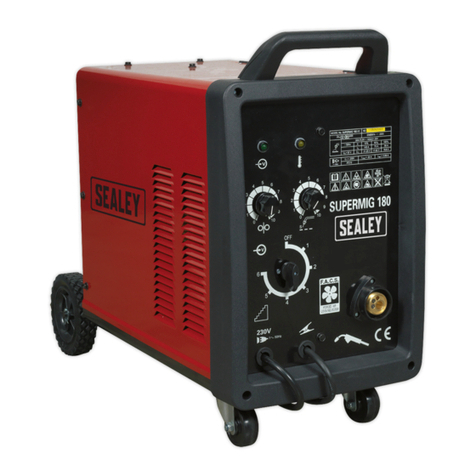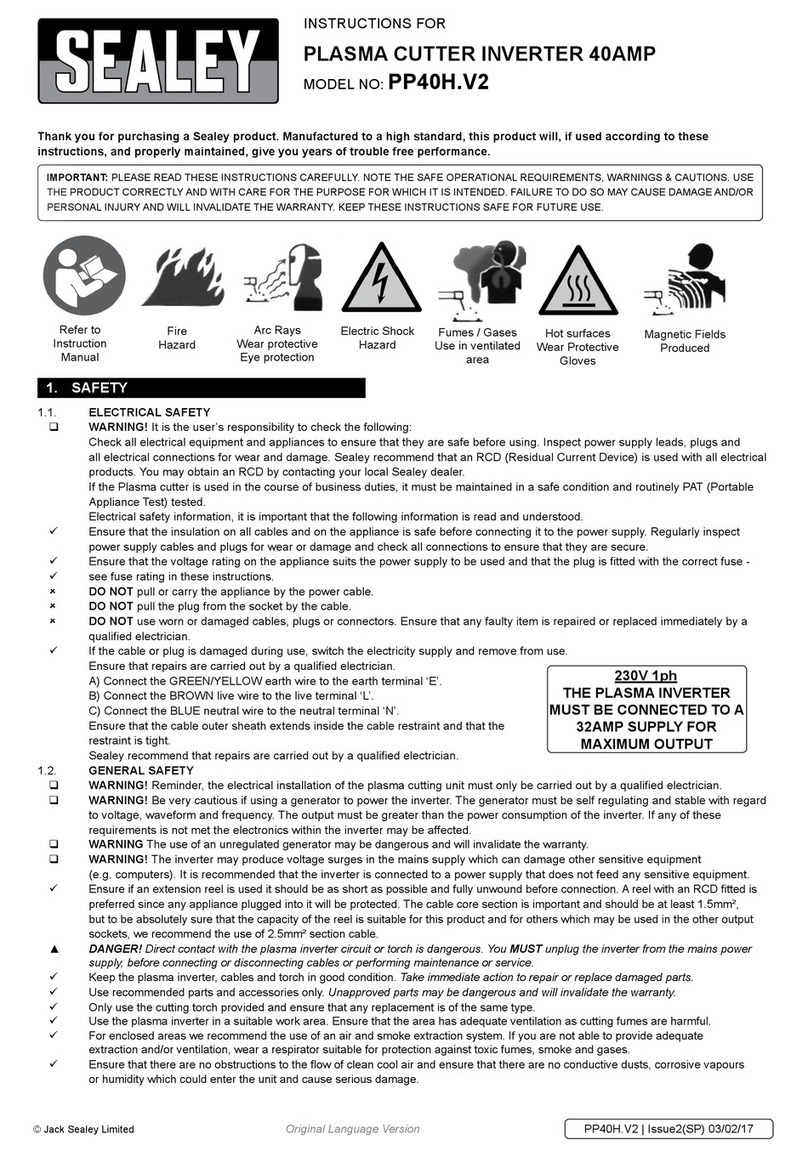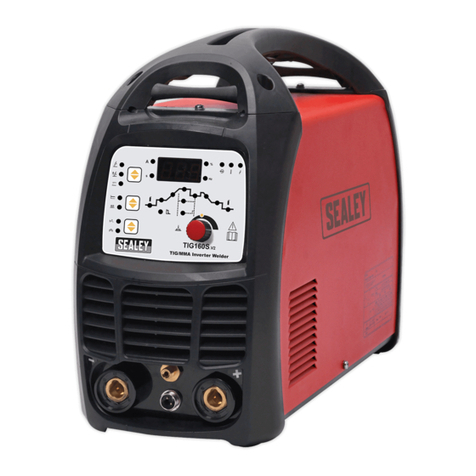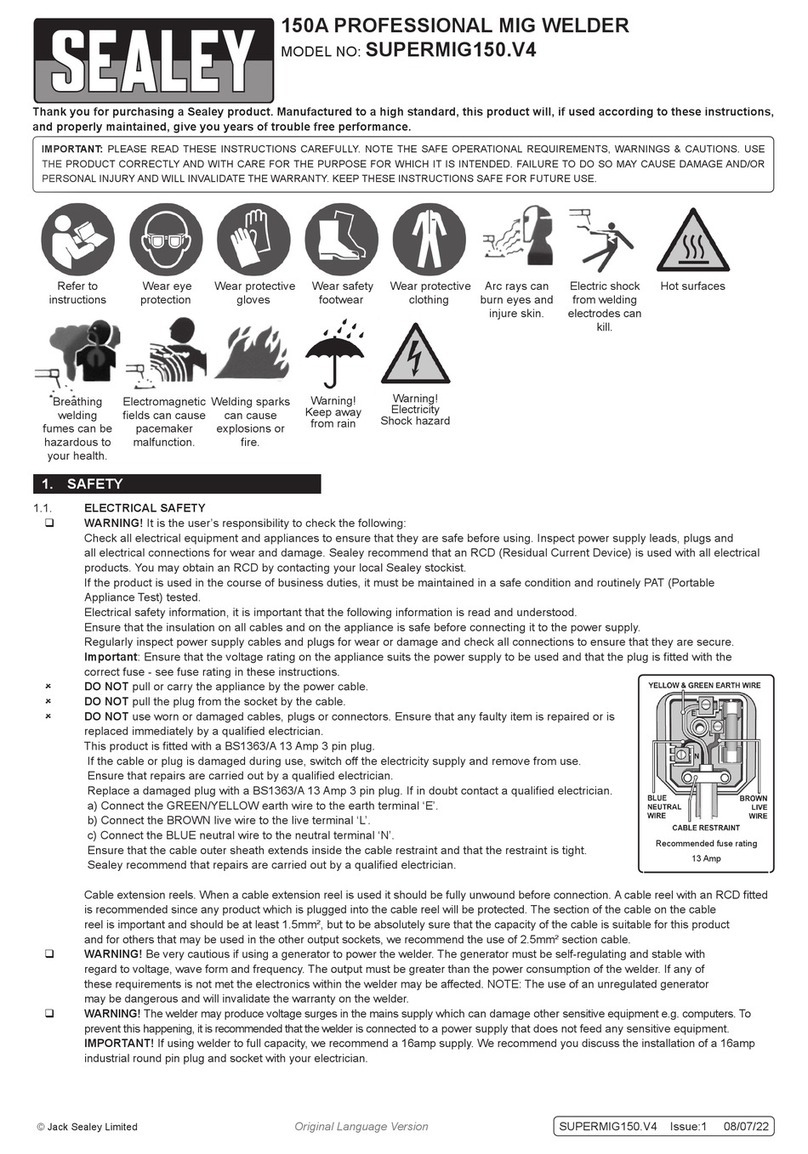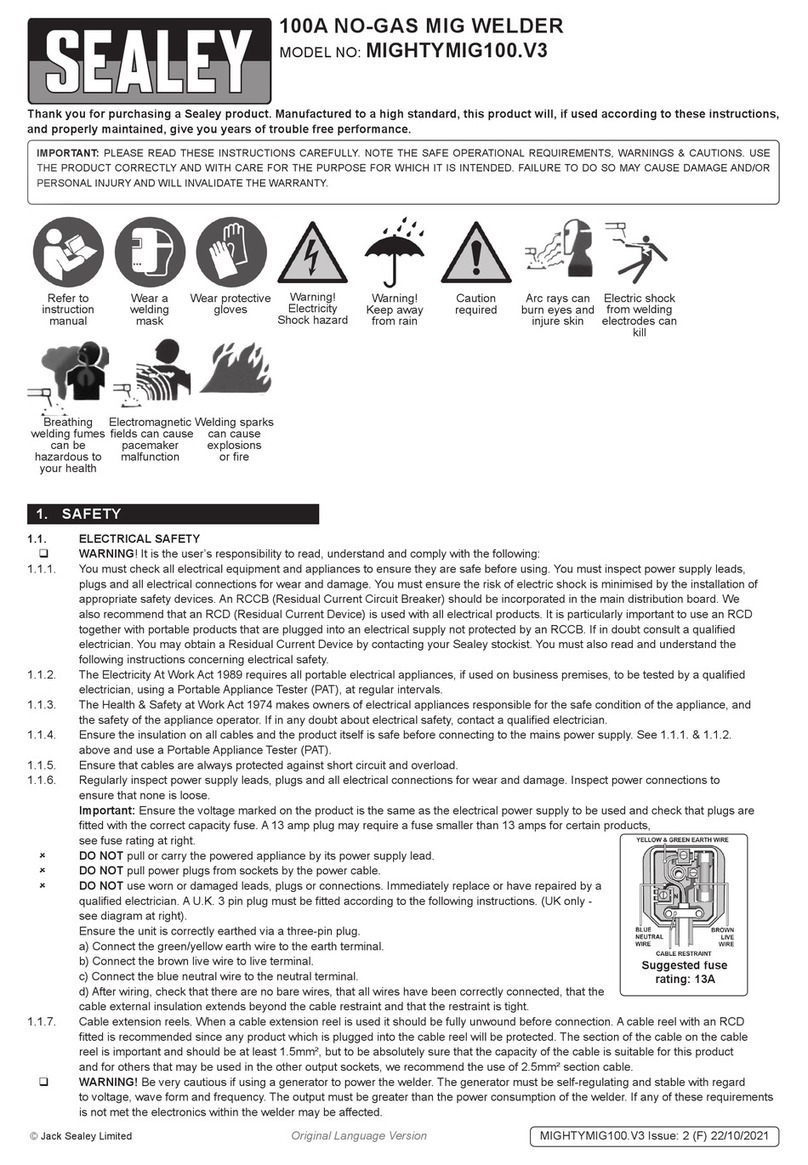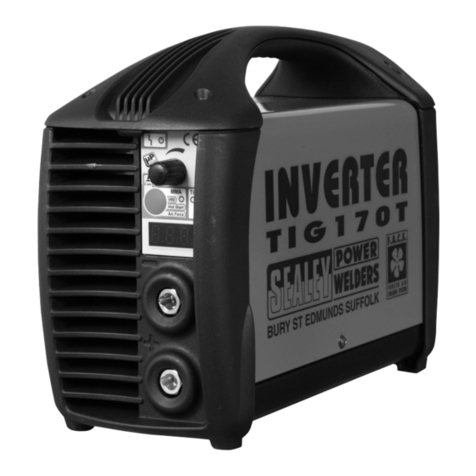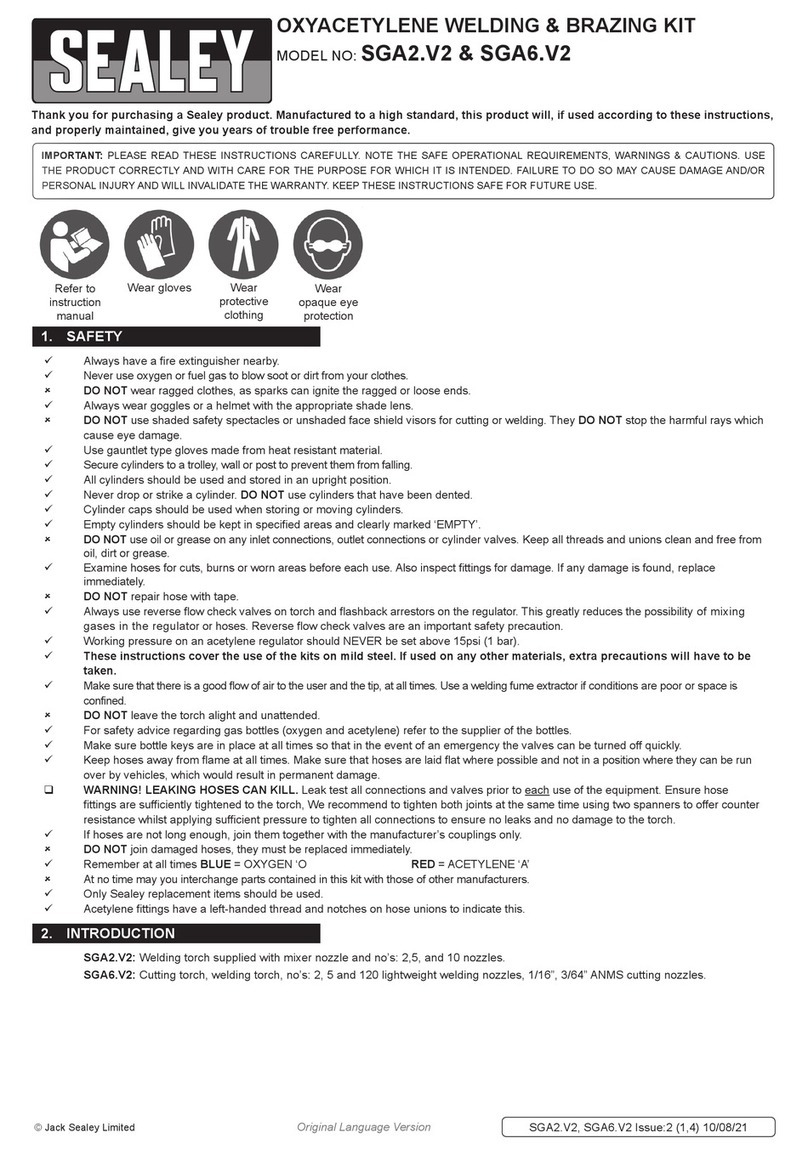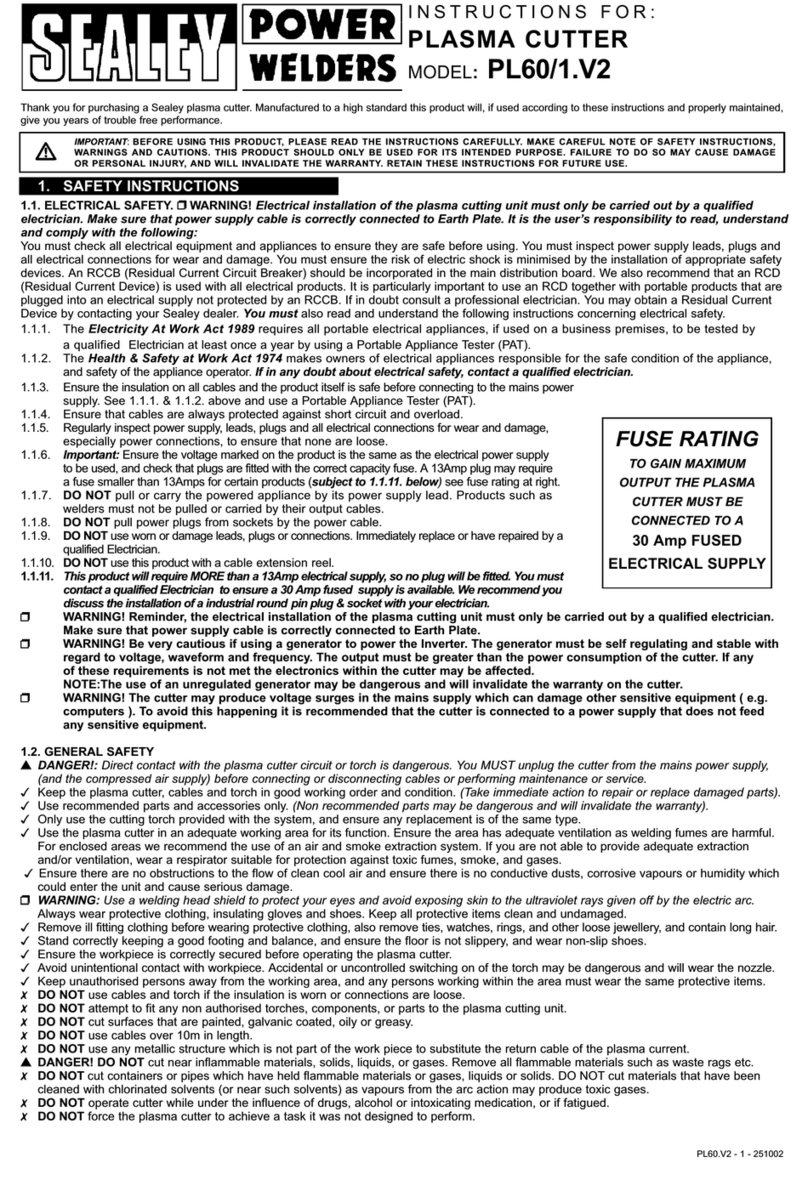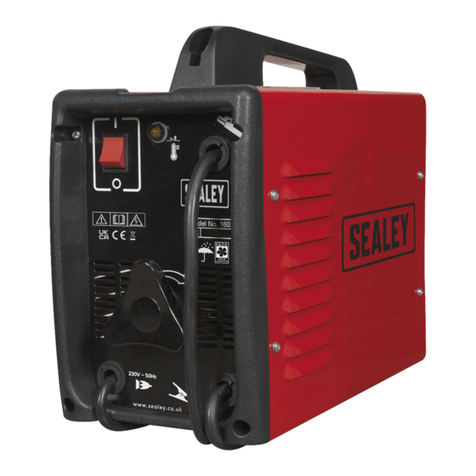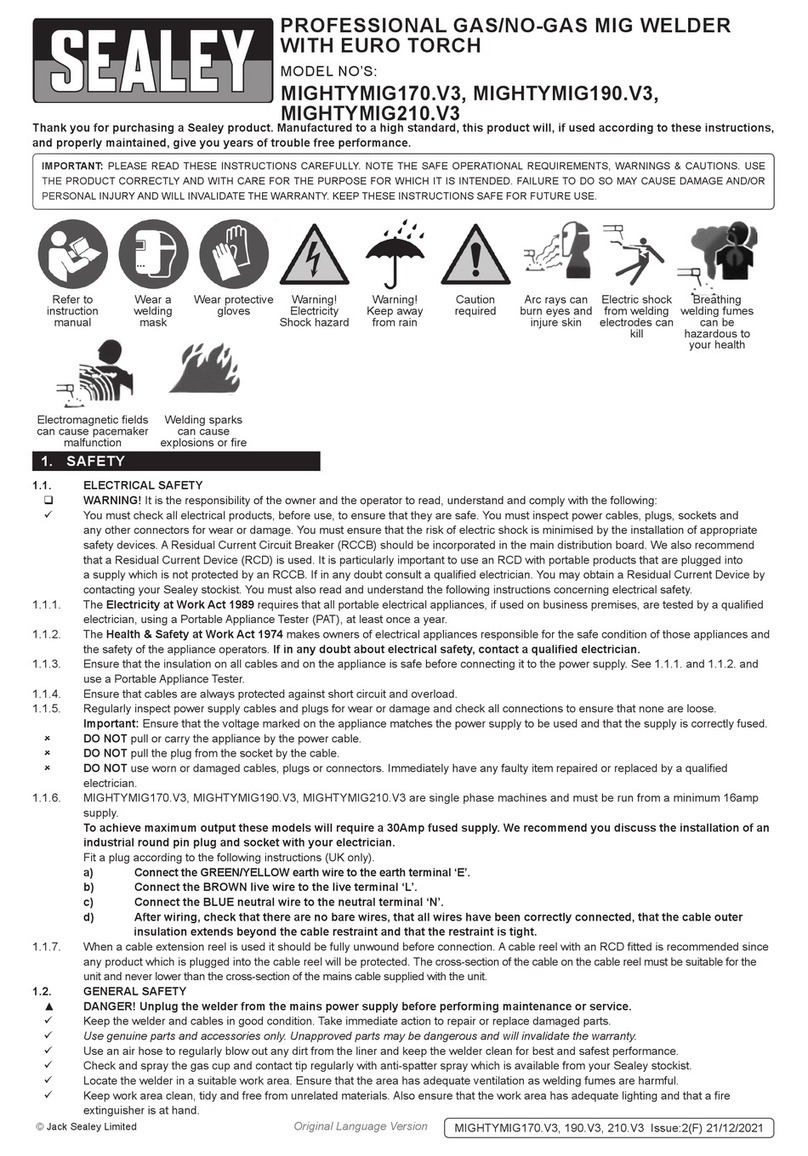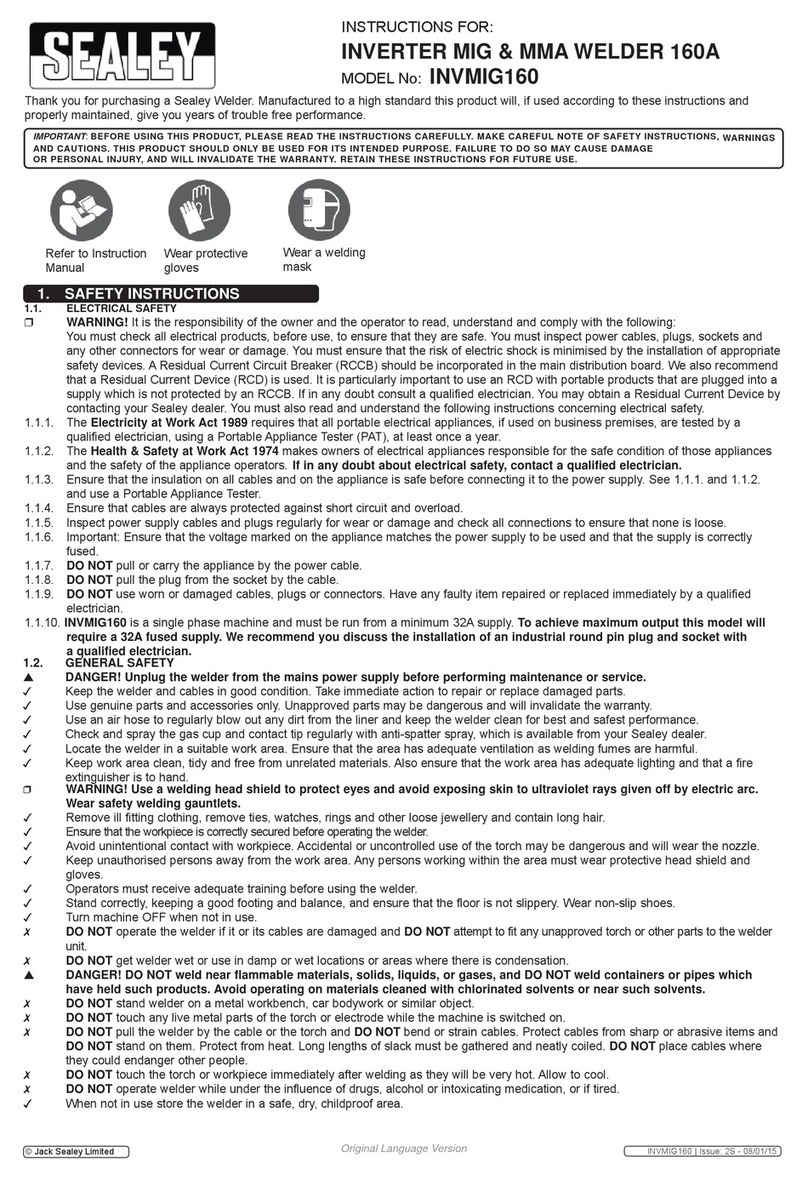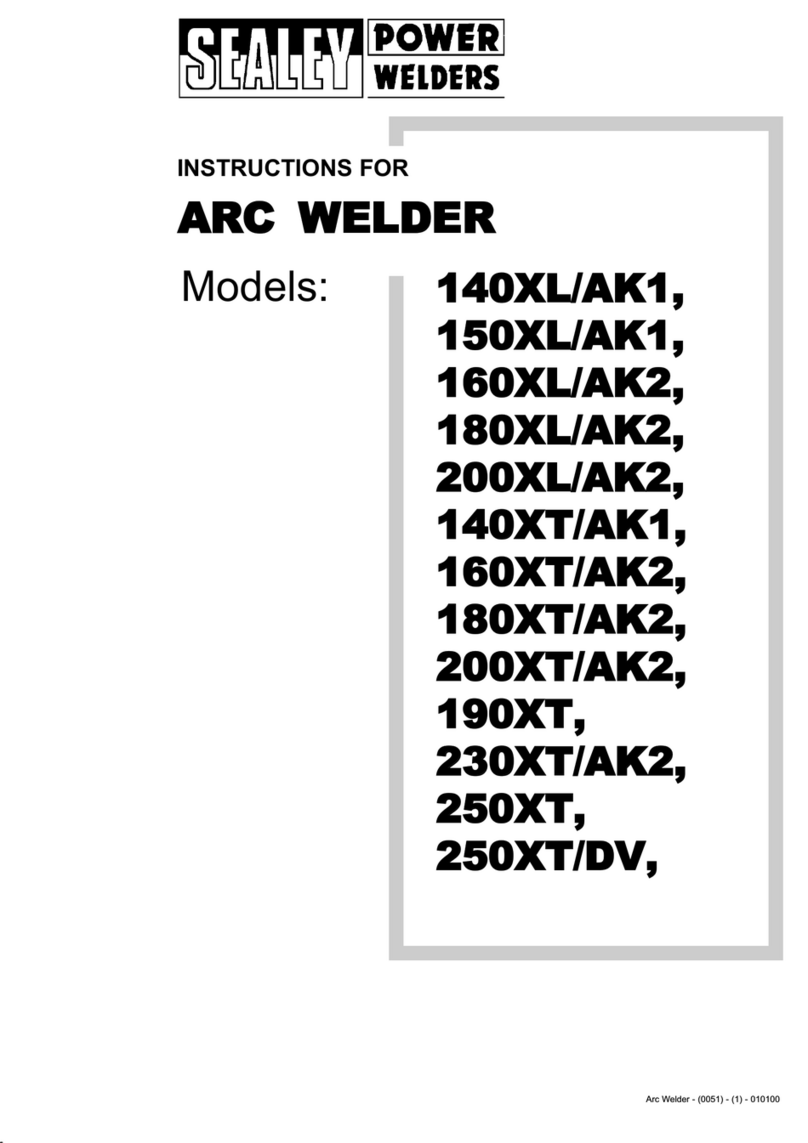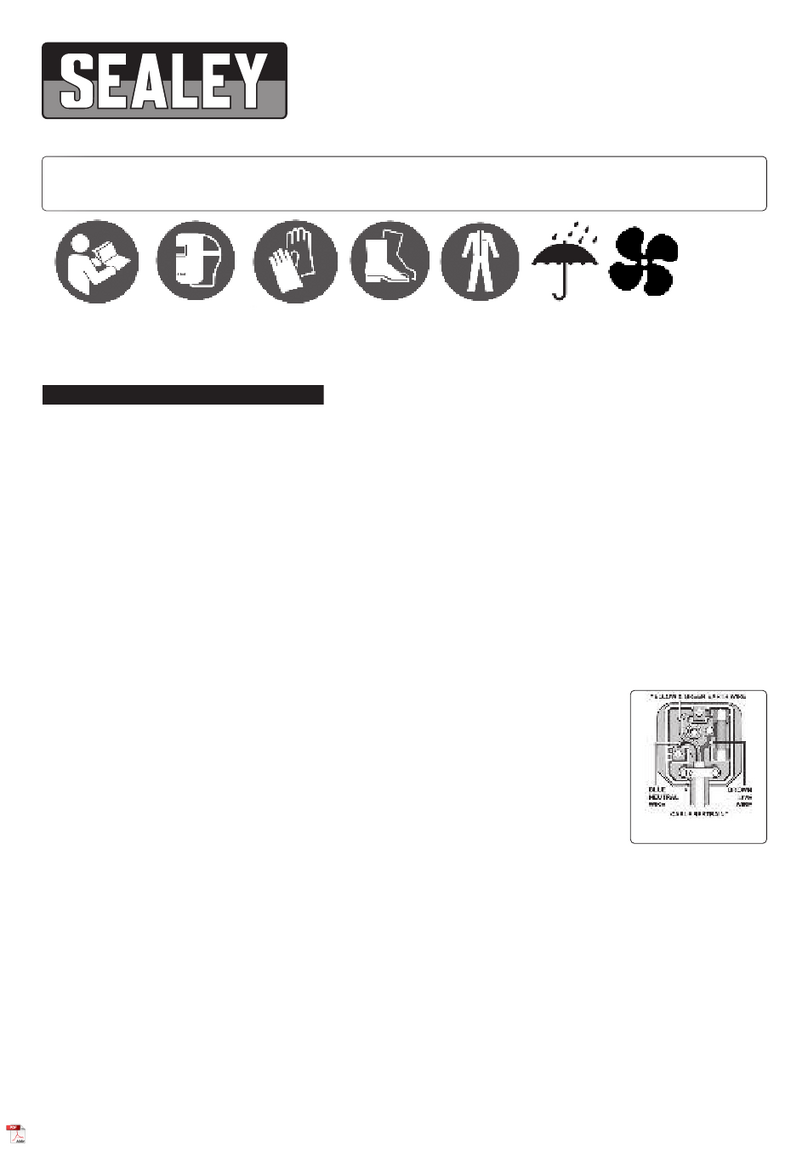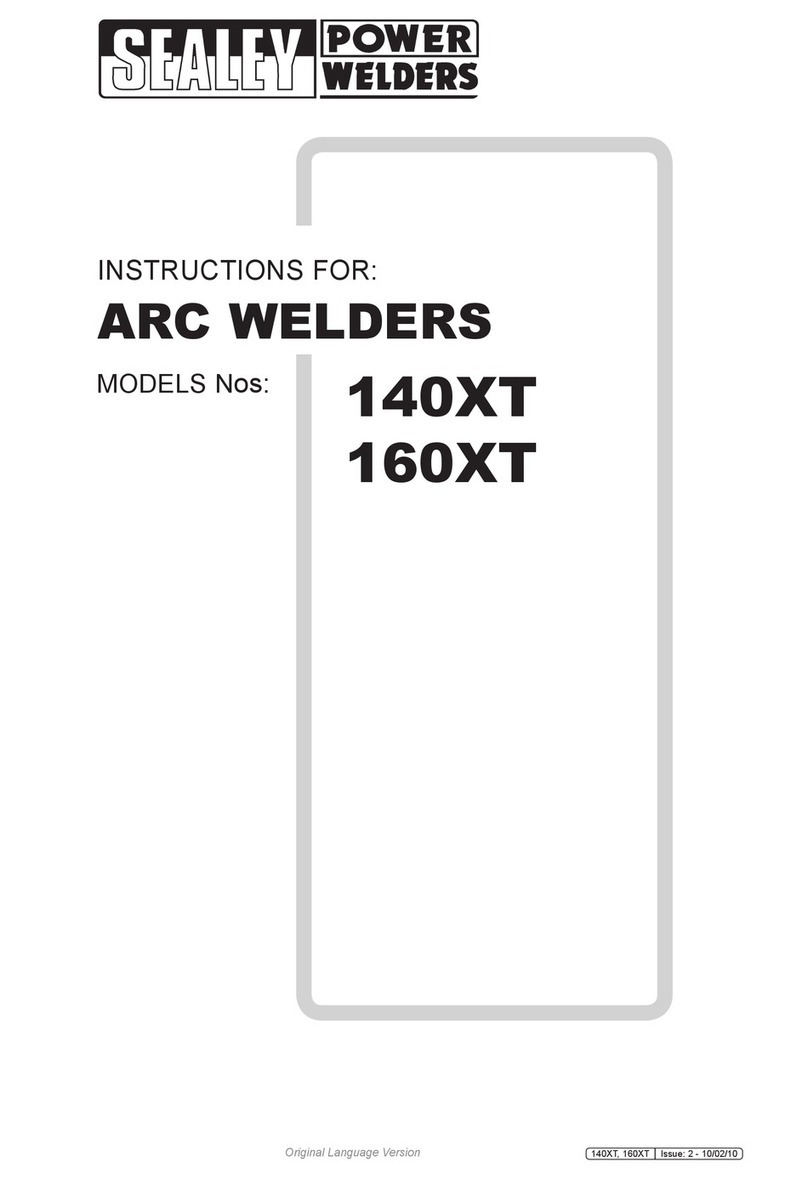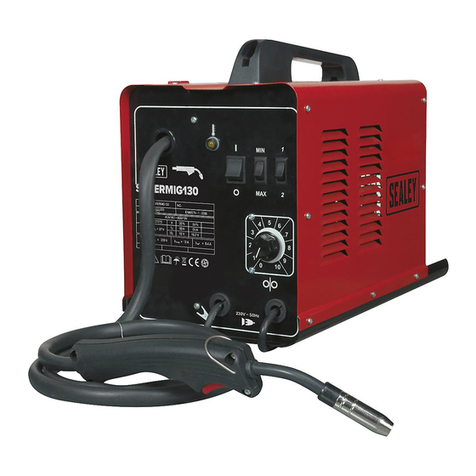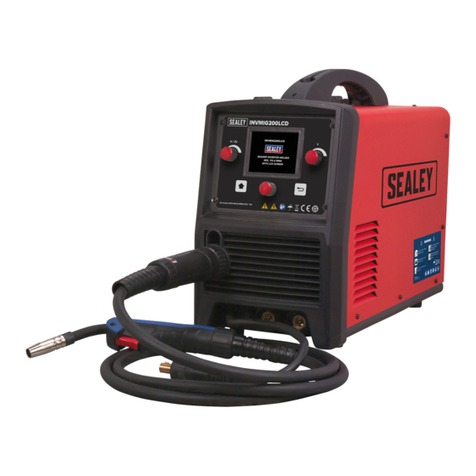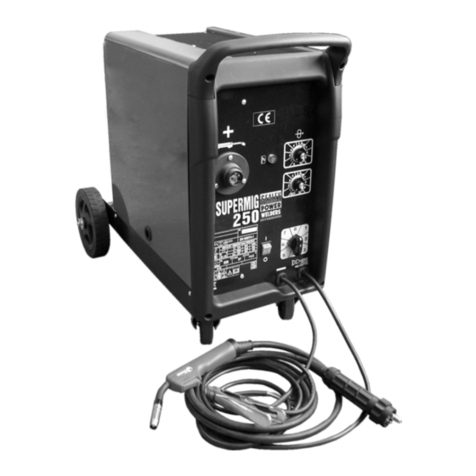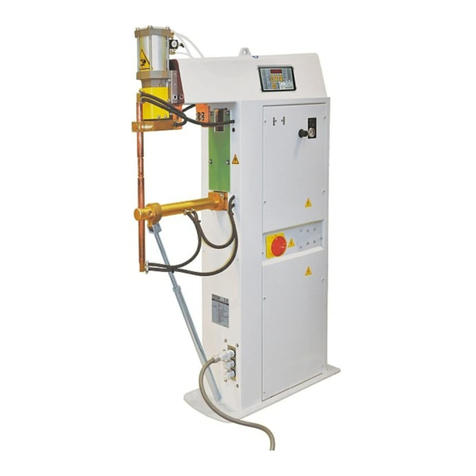
3Always have a fire extinguisher nearby.
7Never use oxygen or fuel gas to blow soot or dirt from your clothes.
7DO NOT wear ragged clothes, as sparks can ignite the ragged or loose ends.
3Always wear goggles or a helmet with the appropriate shade lens.
7DO NOT use shaded safety spectacles or unshaded face shield visors for cutting or welding. They DO NOT stop the harmful rays which cause eye damage.
3Use gauntlet type gloves made from heat resistant material.
3Secure cylinders to a trolley, wall or post to prevent them from falling.
3All cylinders should be used and stored in an upright position.
7Never drop or strike a cylinder. DO NOT use cylinders that have been dented.
3Cylinder caps should be used when storing or moving cylinders.
3Empty cylinders should be kept in specified areas and clearly marked EMPTY.
7Never use oil or grease on any inlet connections, outlet connections or cylinder valves.
3Examine hoses for cuts, burns or worn areas before each use. Also inspect fittings for damage. If any damage is found, replace immediately.
7DO NOT repair hose with tape.
3Always use reverse flow check valves on torch and regulator. This greatly reduces the possibility of mixing gases in the regulator or hoses.
Reverse flow check valves are an important safety precaution.
3Working pressure on the acetylene regulator should NEVER be set above 15psi (1 bar).
3Keep all threads and unions clean and free from oil, dirt or grease.
7Never apply oil or grease to any thread.
3These instructions cover the use of the kit on mild steel. If used on any other materials, extra precautions will have to be taken.
3Make sure that there is a good flow of air to the user and the tip, at all times. Use a welding fume extractor if conditions are poor or space is confined.
7Never leave the gun alight and unattended.
3For safety advice regarding gas bottles (oxygen and acetylene) refer to the supplier of the bottles.
3Make sure bottle keys are in place at all times so that in the event of an emergency the valves can be turned off quickly.
3If this kit is used in on business premises, extra safety is available by fitting Sealey SGA3/RFA or MFA and SGA4/RFA or MFA flashback arresters.
3Keep hoses away from flame at all times. Make sure that hoses are laid flat where possible and not in a position where they can be run over
by vehicles, which would result in permanent damage.
3LEAKING HOSES CAN KILL. Check all joints weekly to make sure there are no leaks.
3If hoses are not long enough, join them together with the manufacturers couplings only.
7DO NOT join damaged hoses, they must be replaced immediately.
3Remember at all times BLUE = OXYGEN O
RED = ACETYLENE A
3At no time may you interchange parts contained in this kit with those of other manufacturers.
Only Sealey replacement items should be used.
3Acetylene fittings have a left-handed thread and notches on hose unions to indicate this.
3The regulators in this kit have no user-serviceable parts. All repairs/calibrations must only be
undertaken by a BCGA approved service agent.
INSTRUCTIONS FOR:
GAS WELDING/CUTTING KIT
MODEL: SGA1
Thank you for purchasing a Sealey product. Manufactured to a high standard this product will, if used according to these instructions and properly maintained, give
you years of trouble free performance.
1. SAFETY INSTRUCTIONS
IMPORTANT: PLEASE READ THESE INSTRUCTIONS CAREFULLY. NOTE THE SAFE OPERATIONAL REQUIREMENTS, WARNINGS AND CAUTIONS. USE THE PRODUCT
CORRECTLY AND WITH CARE FOR THE PURPOSE FOR WHICH IT IS INTENDED. FAILURE TO DO SO MAY CAUSE DAMAGE AND/OR PERSONAL INJURY AND WILL
INVALIDATE THE WARRANTY. PLEASE KEEP INSTRUCTIONS SAFE FOR FUTURE USE.
SGA1 - 3 - 060803
Contents Model Number
Torch Handle, Welding Attachment, Cutting Attachment
Welding Nozzles No. 2, No. 5, No. 10 SGA6
Cutting Nozzles 1/32, 3/64, 1/16
Oxygen Regulator, Twin Gauge Single Stage SGA3
Acetylene Regulator, Twin Gauge Single Stage SGA4
Nozzle Cleaning Tools SGA1/NCT
Hoses, 2, 3/8 x 1.5mtr, complete with fittings and non-return valves SGA5
2. CONTENTS
3.1.1. Make sure that the cylinders are secure as noted in safety precautions.
3.1.2. Whilst standing on one side crack each cylinder valve. Cracking is to quickly open and close the valve allowing gas to escape and
clear the valve of any foreign bodies.
pWARNING! If grease or oil is found, discontinue use of cylinder immediately and contact your gas supplier.
3.1.3. Attach oxygen and acetylene regulators to the appropriate cylinders. A wrench should be used to ensure tight connections. To tighten,
turn CLOCKWISE for OXYGEN, and ANTI-CLOCKWISE for ACETYLENE.
3.1.4. Regulator adjusting screws should be turned anti-clockwise to relieve the pressure on the diaphragm before opening the cylinder valves.
If this is not done, pressure from the cylinder can damage the diaphragm and render the regulator inoperative.
3.1.5. Both cylinder valve-to-regulator connections should be checked for leaks. Stand so that the cylinder valve is between you and the regulator.
Slowly open the cylinder valve. Use an approved leak detector.
3. OPERATION

